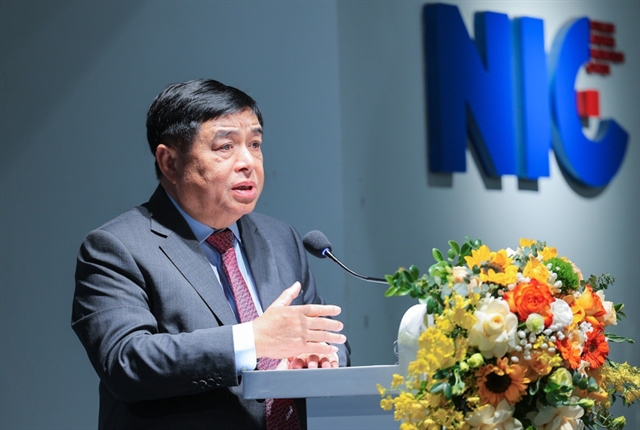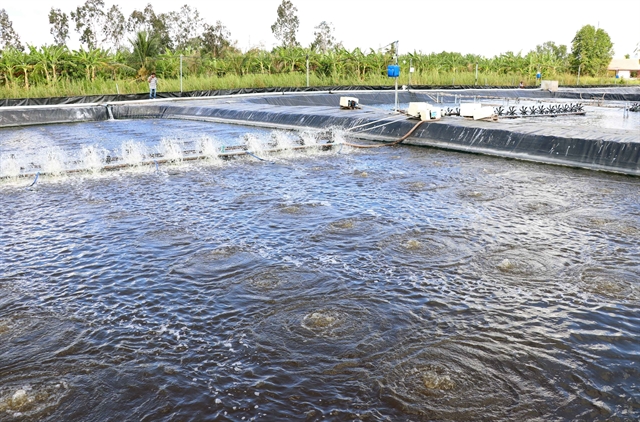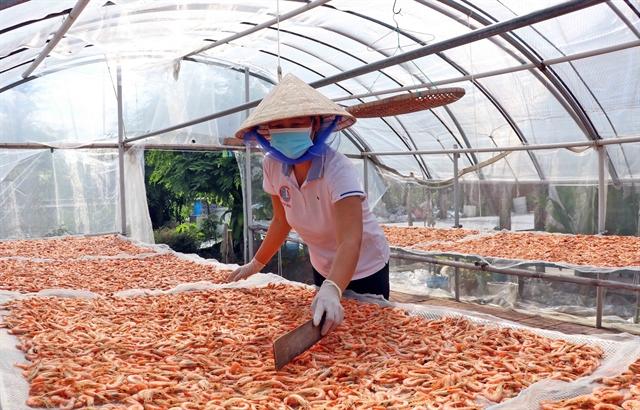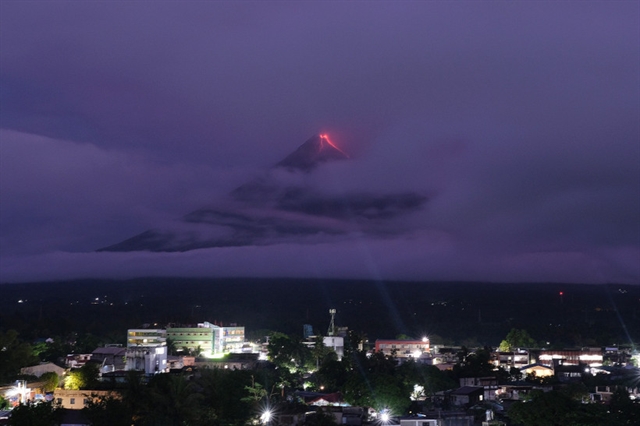 Society
Society

 |
| Ponds with white-legged shrimp bred using the super-intensive farming model and advanced techniques in Cà Mau Province’s Cái Nước District. — VNA/VNS Photo Huỳnh Anh |
CÀ MAU — Cà Mau Province is focusing on developing high-quality shrimp farming to enhance production, value and exports.
Farmers there are employing various models, such as shrimp-rice, shrimp-forest and high-tech shrimp farming, all aimed at ensuring high quality.
Located in the Cửu Long (Mekong) Delta, Cà Mau enjoys geographical advantages for brackish-water shrimp farming, with its three sides bordering the sea and a 254km coastline.
The province, known as the largest shrimp producer in Việt Nam, boasts nearly 280,000 hectares of brackish-water shrimp farming.
This includes 86,000ha farmed under shrimp-rice, shrimp-forest, and shrimp-crab-fish farming models, 186,000ha of advanced extensive farming and 6,700ha of intensive and super-intensive farming.
Under the shrimp-rice farming model, coastal farmers have sowed 42,936ha of rice as of early October, surpassing the province’s annual target by 15.7 per cent, according to the provincial Department of Agriculture and Rural Development.
In this system, shrimp are bred in brackish water during the dry season before rainwater flushes out salinity from the fields during the monsoon to make way for rice cultivation.
This model produces high-quality shrimp and rice since farmers use minimal chemicals and the shrimp feed on natural resources.
Trần Huy Hoàng, who has a three-hectare of shrimp-rice farm in Trần Văn Thời District’s Lợi An Commune, noted that favourable rainfall this year has made rice cultivation under this model particularly successful, and locals are optimistic.
“More farmers are successfully sowing rice seeds this year due to their improved techniques. As a result, the sowing area has increased compared to previous years.”
Shrimp-rice farming yields profits of VNĐ100-120 million (US$4,000-4,800) per hectare annually, higher than from two annual rice crops on the same land, according to local farmers.
Võ Văn Lạc, deputy chairman of the Lợi An Commune People’s Committee, said at the start of this year’s rice crop, agricultural officials were tasked with encouraging farmers to grow rice in shrimp-rice farming fields.
The committee, in collaboration with relevant departments and agencies, provided guidance on farming techniques, improving soil fertility and strictly adhering to sowing schedules to minimise damages.
Another 40,000ha are farmed under the shrimp-forestry model to produce high-quality crustaceans, with around 20,000ha certified to be of international standards.
Thới Bình District’s 696ha shrimp-rice farming area, managed by 321 households, has got the Best Aquaculture Practices certification from the Global Aquaculture Alliance, a first in Việt Nam.
Improving Value
Cà Mau’s households, co-operatives and businesses are increasingly diversifying products made from shrimp to add value.
Tân Phát Lợi Co-operative in Ngọc Hiển District’s Tân Ân Tây Commune produces 16 different products from the creatures including dried, flakes, powder, sauce, fermented, paste, chips, and chili shrimp salt.
Bùi Văn Chương, its director, said when the co-operative was established 11 years ago it only produced dried shrimp.
But over time he researched and developed various other products and invested in modern processing facilities to increase value.
Today, the co-operative has one four-star and seven three-star products under the national “One Commune – One Product” (OCOP) programme.
These are sold nationwide and through major supermarkets such as Saigon Co.op.
Ngọc Hiển District, which has 23,000ha of aquaculture, primarily focuses on shrimp farming. Of the district’s 22 OCOP products, 16 are shrimp-related.
Lê Hoài Phương, deputy head of its Bureau of Agriculture and Rural Development, said the district is establishing clean farming areas and adopting advanced techniques to produce high-quality shrimp that meet export standards and are used in producing the province’s speciality and OCOP products.
“We hope to enhance the competitiveness of our shrimp products, attract more consumers and expand markets.”
 |
| Dried shrimps made by boiling and drying them under the sun in Cà Mau Province’s Đầm Dơi District. Under the traditional method, after being boiled, the shrimps are dried in the open for two days and one night. — VNA/VNS Photo Huỳnh Anh |
Export prospects
By 2025, Cà Mau aims to have 280,000ha of shrimp farms with an output of 280,000 tonnes and exports of US$1.4 billion.
To achieve these goals, it is building infrastructure in shrimp breeding areas, developing clean farming models and improving both quality and yields to expand markets.
Advanced technologies are being adopted, including automatic monitoring systems to check shrimp health and environmental conditions for quick identification and resolution of problems.
It is increasingly adopting biotechnology and using biological products and beneficial microorganisms to boost shrimp health and reduce antibiotic use.
Several infrastructure projects are also underway to support shrimp farming and processing, including irrigation, power and other facilities, which help reduce production costs and improve the province’s competitiveness in export markets.
Farmers are being supported in shifting to organic and biological breeding methods to meet export requirements.
Cà Mau exports shrimp to markets including the US, EU, Japan, and China. — VNS




